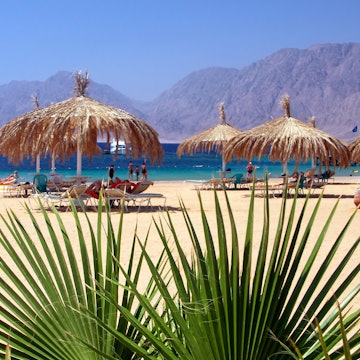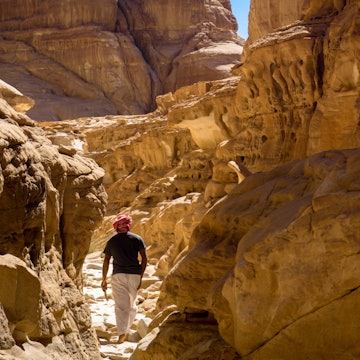
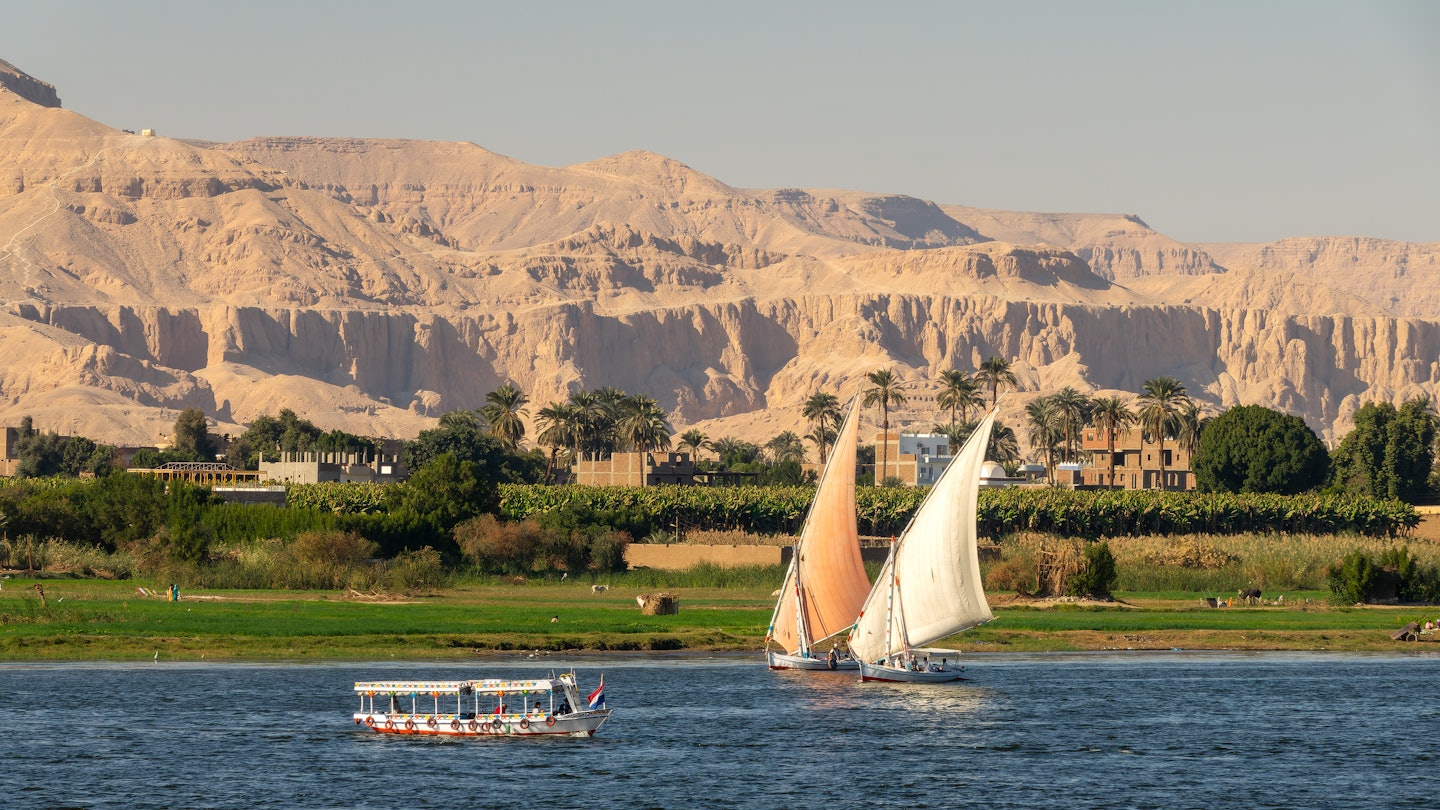
Feluccas sailing on the Nile near Luxor, Egypt. Delpixart/Getty Images
To travel around their domains, the pharaohs of ancient Egypt took to the Nile, a watery highway that brought life to their otherwise parched lands. Today, travelers can still follow nobly in those Pharaonic footsteps on a Nile cruise. All of Egypt’s major cities, temples and tombs lie along the Nile, the world’s longest river, and cruising the Nile is not just a time-honored way to explore its ancient sites but also one of the best ways to get around Egypt. The unexpected sights of life along the river are every bit as thrilling as the tombs and temples on the cruise schedule.
As you’re deciding where you want to stop on a Nile cruise in Egypt, it’s important to choose what type of boat you want to take the journey on. Not all boats travel the full length of the river or stop at all the sites.
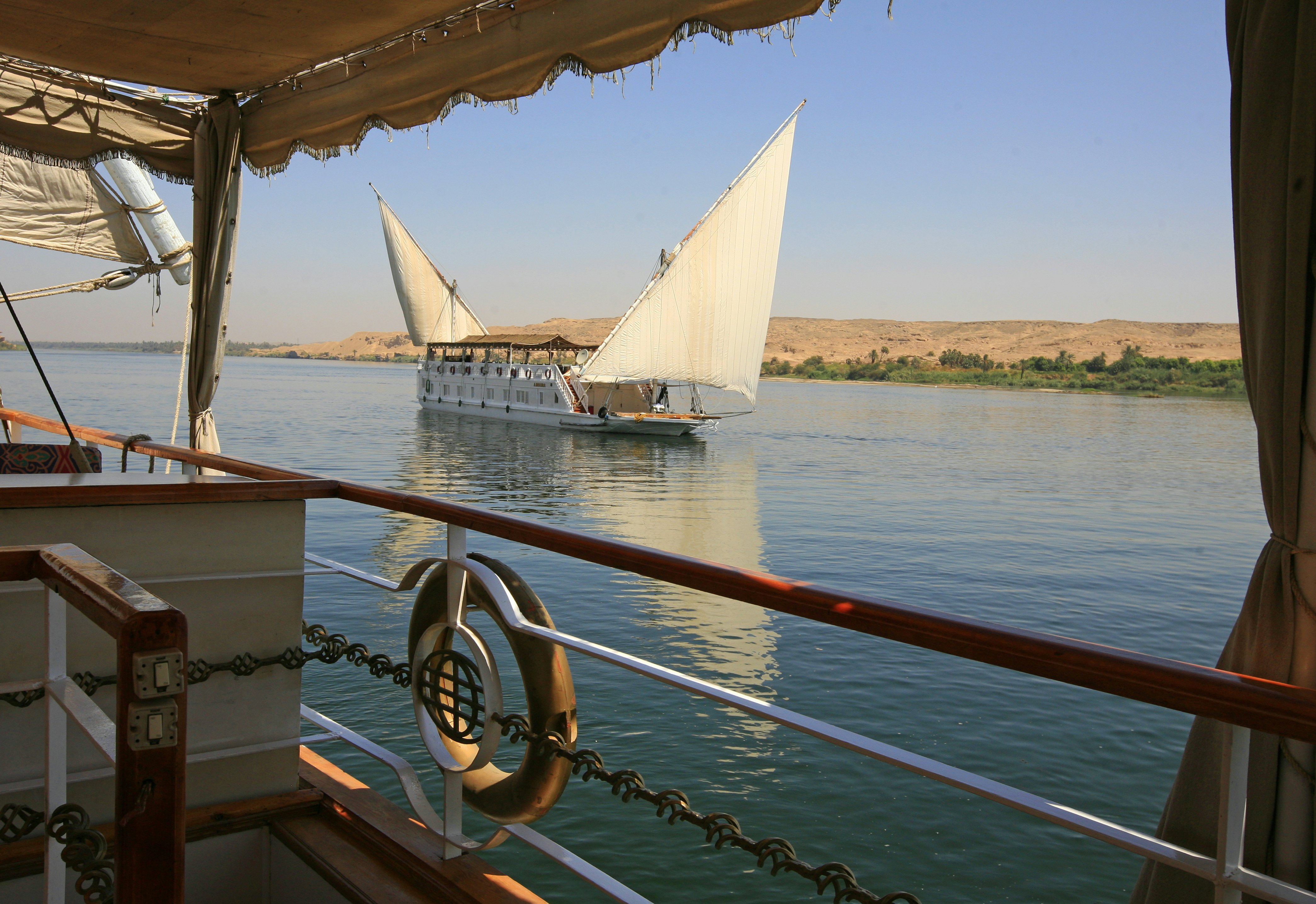
Where do Egyptian Nile cruises go?
Luxor–Aswan
The vast majority of Nile cruises travel in both directions between Luxor and Aswan, and this stretch of the river has the greatest concentration of ancient monuments in Egypt, making it a popular choice. Large Nile cruisers stick to rigid itineraries, while dahabiyas (motorless boats with two sails) can stop at small towns or less-visited antiquities. Some Nile cruises, such as those with Viking, include stops at temples near Luxor, such as Dendara and Esna, which isn’t a standard offering.
Cairo–Aswan
Long Nile cruises add on the section of water between Luxor and Cairo to cover nearly the full length of the river in Egypt. The experience is unbeatable, taking in the best of ancient Egypt from the water, but they can be tough to schedule, with infrequent departures (often just once a month and none in summer), itineraries that are rarely shorter than two weeks and few operators running them. Jules Verne’s 600-Mile Nile is an excellent choice.
Lake Nasser
Because of the two dams on the Nile in Aswan, boats cannot continue south on the river. However, separate cruises on Lake Nasser take in the empty landscapes and lesser-visited temples on the lakeshore, starting or ending at the mighty Abu Simbel. Because Lake Nasser trips aren’t as popular, they see fewer customers, so they have fewer departure dates and can be more expensive than Nile cruises.

What types of Nile cruise boats are there?
Nile cruisers
The most common boats you’ll see on the river are Nile cruisers, which are medium or large vessels that can carry 30 to 100 passengers. They come in varying levels of luxury: some have small gyms and spas, and most come with a rooftop pool. These ships’ itineraries include standard Nile cruises as well as long Nile cruises. Viking, Oberoi and Uniworld operate top-notch cruisers with swoon-worthy decor and amenities.
Dahabiyas
Dahab means gold in Arabic, and traveling on these beautifully appointed sailing ships is undoubtedly a top-tier experience. These small wooden vessels carry about 15 passengers and glide on the river using their double lateen sails (or are pulled by tugboats when the wind gives up). Because of the wind direction, dahabiyas generally only travel south from Esna to Aswan; groups meet in Luxor, but because there’s a lock on the river in Esna, travelers are taken by van from Luxor to the boat dock after seeing Esna’s sites. Nour El Nil has stunning ships that look straight out of a design magazine, and the laid-back itineraries include stops for swimming and to visit local villages.
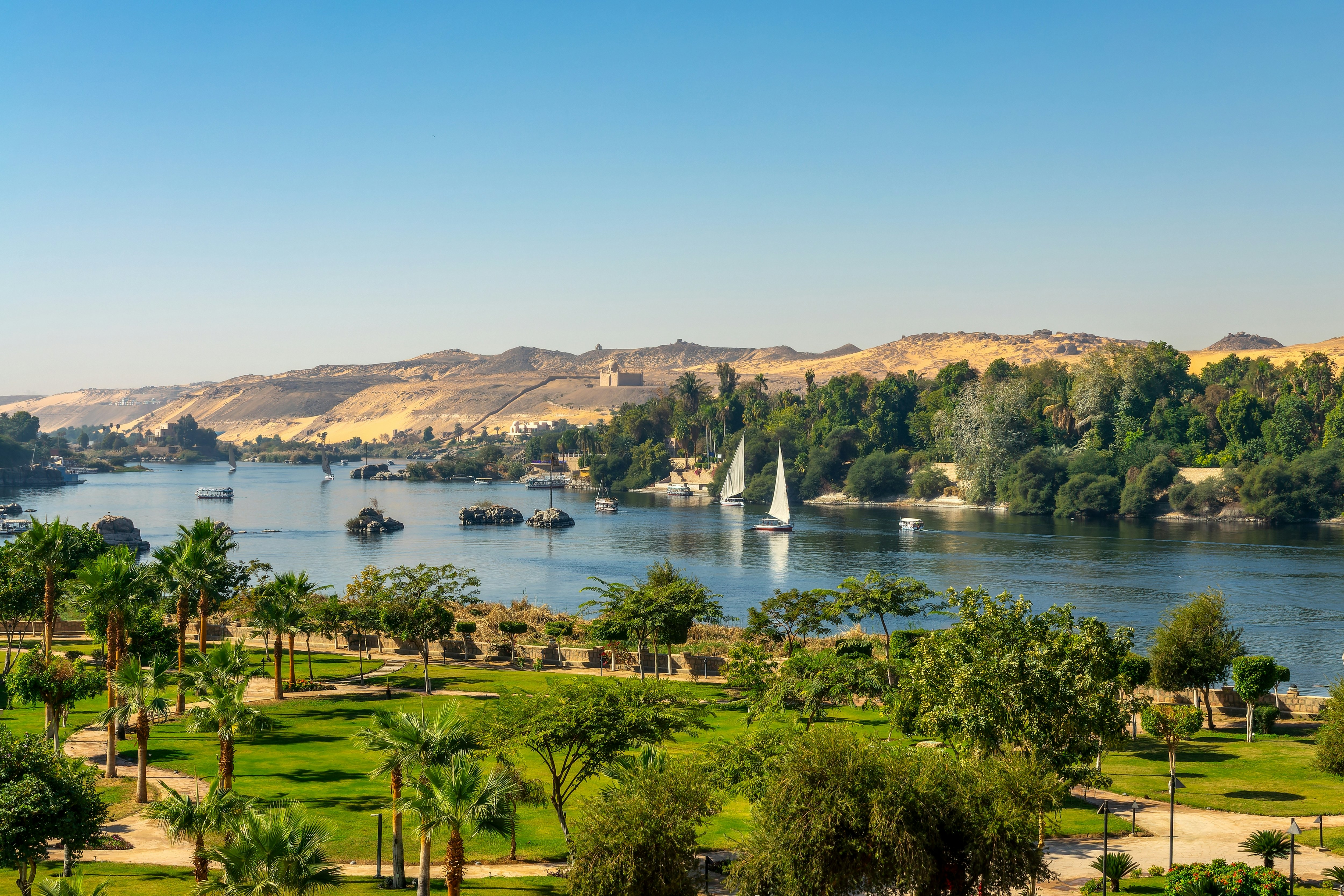
Feluccas
Except for swimming, taking a felucca journey is as close as you can get to the Nile. Feluccas don’t really qualify as a Nile cruise because their distances are limited – many travelers ride a felucca just for a sunset cruise in Luxor or Cairo or to get around the islands of Aswan, but slightly longer options are available.
Overnight felucca trips are the best adventure on the Nile, traveling downriver from Aswan to Kom Ombo, and maybe beyond if the winds are in your favor. The boat captain cooks hearty meals, and at night, you’re lying under a blanket of stars on an open-top sailboat. However, feluccas generally don’t have cabins or toilets, so it's like camping on the river. Feluccas are not allowed to sail in the dark, so they stop at sunset and set up camp. Because they don’t have motors, feluccas are at the mercy of the wind, which means itineraries must be flexible and potentially cut short. Arrange overnight felucca trips with the super-organized and helpful folk at Aswan Individual.

What can I see at each stop along the Nile?
1. Aswan
Best for sundowners on a terrace
The southernmost navigable point on the Nile in Egypt, Aswan is the start or end of all Nile cruises. Whether you’re setting off on your Egyptian adventure or wrapping up an epic trip, a drink at the Old Cataract is a must. The most prestigious of Aswan hotels, the Old Cataract was built by British travel agent Thomas Cook and opened in 1899. The hotel is most famously associated with Agatha Christie, who spent a year living here in 1937 writing her best-selling murder mystery Death on the Nile. Set on a small bluff, the west-facing outdoor terrace has commanding views over the Nile that are particularly stunning at sunset.
Planning tip: Unless you have a room, you need to buy a voucher (LE1000, about US$20) to enter the Old Cataract grounds. The voucher is redeemable at the hotel’s restaurants. Some higher-end Nile cruises include a hotel stay, afternoon tea or a terrace sundowner stop on their itineraries.

2. Abu Simbel
Best for middle-of-nowhere grandeur
Carved out of a mountain and fronted by four 20m-tall (65ft) rock-sculpted statues, the Great Temple of Ramses II in Abu Simbel is one of Egypt’s most iconic ancient structures. It’s loved for its architecture, its sublime lakeside setting far from any urban hubbub, the miraculous story of its rescue from the rising waters of Lake Nasser, and its biannual illumination on February 22 and October 22, when the sun penetrates into the temple’s darkest recesses. The best way to visit Abu Simbel is on a Lake Nasser cruise, which starts or ends at Abu Simbel’s temples – visit them in the afternoon after most of the day-trippers have returned to Aswan, and stay for the nighttime sound-and-light show.
Planning tip: Don’t have time for a Lake Nasser cruise? Nile cruises can’t reach Abu Simbel by boat because of the dams in Aswan, but they often include a free day in their itineraries for travelers who want to visit the temples (for an additional cost). From Aswan, you can take a pre-dawn van ride through the desert or fly from the town’s airport.

3. Kom Ombo
Best for seeing crocodile mummies
Though Nile crocodiles no longer live north of the Aswan dams, a Nile cruise wouldn’t be complete without paying homage to them. Do as the ancient Egyptians did and pay your respects at Kom Ombo, a unique double temple – a style that’s found nowhere else in the country – that's devoted half to Horus and half to the crocodile god Sobek. The temple has two of everything, from courts and altars to sanctuaries, showing that one god wasn’t favored more than the other. After visiting the temple, a museum displays dozens of mummified crocodiles, many brought as offerings to appease the gods.
Planning tip: Kom Ombo is always included on itineraries for Nile cruises. You might be able to get here by felucca from Aswan if the winds cooperate, but it could take a few days and is best left for travelers with flexible itineraries. Kom Ombo is open until 8pm, and long Nile cruises starting in Aswan visit around sunset, which is incredibly atmospheric.

4. Edfu
Best for intact architecture
The Temple of Horus in Edfu is dedicated to its namesake falcon-headed god, and it’s one of the best preserved temples in Egypt, with antechambers and halls to explore, as well as the inner sanctuary, which still contains the polished-granite shrine that once housed the god’s golden cult statue, a particularly special sight because no other Egyptian temple still has one in situ.
Don’t rush to get into the interior of the temple because the courtyard has tons to see, particularly its wall carvings. Notice the sails of the boats, which are pictured rolled up if they face in the direction of the Nile's flow, and open in the other direction. The courtyard was once the only part of the site that members of the public were allowed to visit. During the day, it was so bright outside that they couldn't see what was happening inside the temple, which only privileged priests and the pharaoh had access to.
Planning tip: Edfu is always included on Nile cruise itineraries.

5. Esna
Best for vibrant colors
Esna’s Temple of Khnum is small but absolutely worth seeking out. Dedicated to the ram-headed creator god who made humans on a potter’s wheel, this temple is a Ptolemic-era construction sitting in a 9m-deep (30ft) pit excavated from 15 centuries of desert sand. Crane your neck to take in the hypostyle hall with 18 columns, each topped with a uniquely designed capital covered with carvings of palm leaves, lotus buds, papyrus fans and bunches of grapes. Thanks to ongoing restoration efforts, the colors are just as remarkable and eye-catching as the day they were painted. Locate the blackened square on the ceiling to see what the temple looked like before the work to clean off the soot and sand started.
Planning tip: Esna is not a standard stop on Nile cruises because the town’s docks are too small to welcome larger boats, but a few smaller cruisers do stop here. Dahabiyas usually start their itineraries here so that they don’t have to go through the locks on the Nile.

6. Luxor
The best of ancient Egypt in one place
Modern-day Luxor is the long-time ancient Egyptian capital of Thebes, so it’s no surprise that many of the pharaohs’ biggest and best projects were constructed here. Luxor is an absolute treasure trove, and you could devote many days to exploring it all. Nile cruise itineraries head to the three main ancient sites but don’t tend to go off the beaten track.
You’ve probably read about the tomb of Tutankhamun and its stash of golden treasures in the Valley of the Kings since your early school days, and this is your chance to see the actual chamber for yourself. Some ancient Egyptian sites have just the smallest flecks of paint left, so it’s almost a shock to see how bright the paintings are inside many of the tombs in the Valley of Kings, where they have been hidden from the sun for so many years. The birds, snakes, boats and other symbols are still in such popping shades of red, yellow, blue and white that they look as if they were brushed on yesterday.
On the Nile’s east bank, Karnak is one of the world’s largest religious complexes, made up of a forest of intricately carved pillars, obelisks and enclosure walls. The sheer scale of this ancient temple gives a shiver-down-your-spine sense of timeless power. Connected to Karnak by the Avenue of Sphinxes, Luxor Temple has an entrance overlooked by two enormous seated figures of Ramses II. One of the highlights of a visit to this temple is discovering evidence of four religions left behind from different eras in the site’s long history. The temple itself was dedicated to ancient Egyptian gods. In one corner are the remains of frescoes belonging to the Roman imperial cult. Islam is also represented – Abu Haggag Mosque sits on top of part of the temple’s walls. Coptic Christians once had a church here, and the remains of some pillars can still be seen in the Temple of Montu.
Planning tip: Luxor is the start or end point for standard Nile cruises. Long Nile cruises also stop here. Luxor is overloaded with sites, but Nile cruises usually don’t stay more than a day or two, so make sure to book extra time if you want to see more.
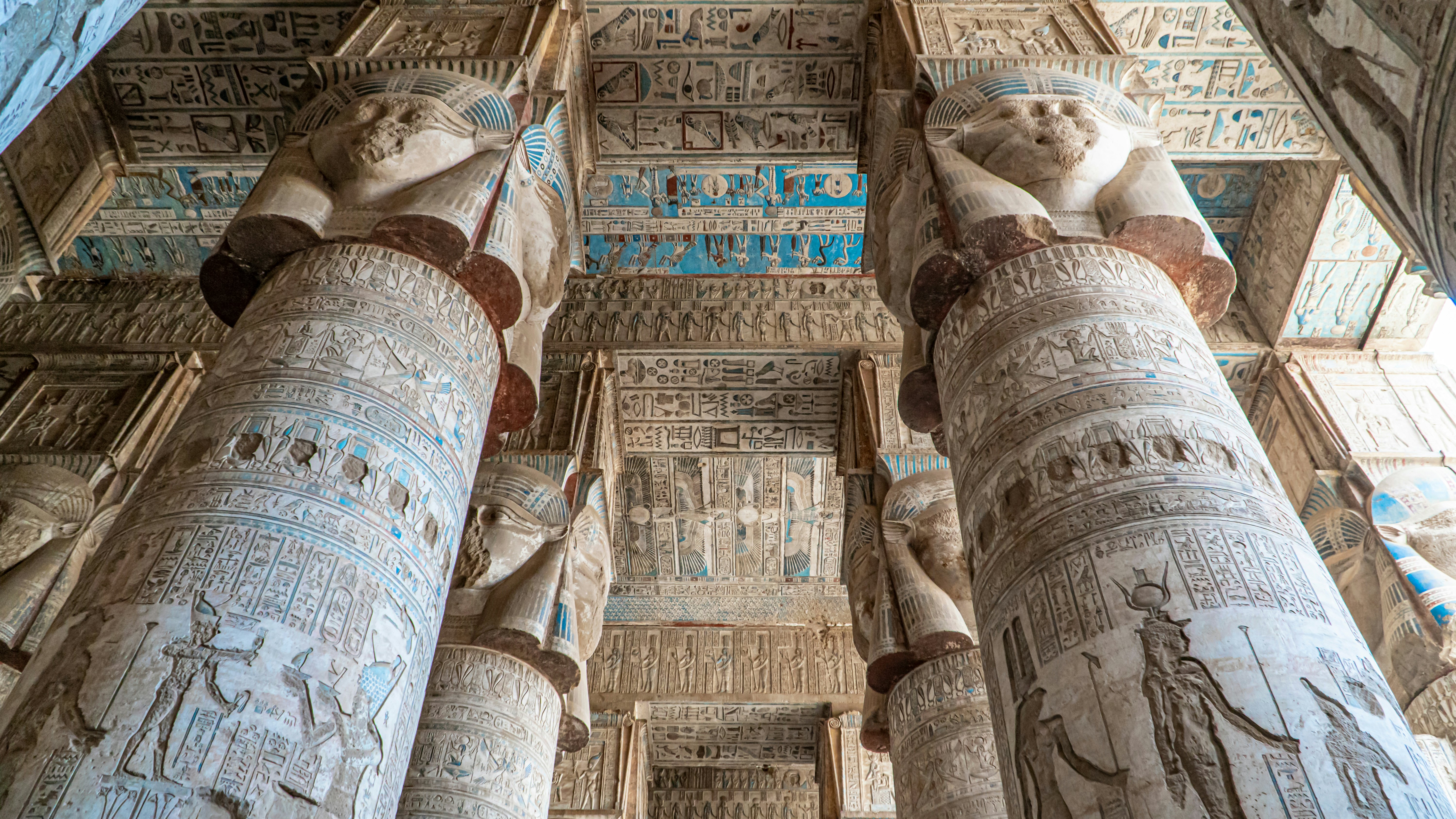
7. Dendara
Best for all-over exploration
Impressively intact, Dendara has been undergoing restoration that has beautifully brightened up its colors. Some of its most striking features are the column capitals sculpted as the head of Hathor, the goddess of love and beauty. The temple’s storerooms and sanctuaries, covered by an intact roof, are darkened wonders to walk around. Unlike many other ancient Egyptian temples, it’s possible to climb up to the roof as well as down into the crypts (both for an additional fee). Don’t miss the famous Dendara Zodiac, sadly a replica here – the French blasted the original bas-relief off the ceiling in the 18th century, and the original is still on display in the Louvre in Paris.
Planning tip: This temple, north of Luxor, is not a common stop on standard Nile cruises, though some companies, such as Viking, are starting to add it. It is a stop on long Nile cruises, or you can visit on a day cruise from Luxor run by Iberotel or on a tour by road with the likes of Magic Carpet Tours.

8. Abydos
Best for Pharaonic names
Ushering in a golden age of art and architecture, Seti I and his son Ramses II constructed this limestone masterpiece with some of the highest-quality carvings of any temple in Egypt. The Temple of Seti I is a work of art, but also an important historical source. The Kings List in one of the temple’s corridors writes out in hieroglyphs the long roll call of pharaohs who came before Seti I, and for some of the names, it’s the sole verification of their existence. It’s not a fully accurate record, though, because Seti I left out the names of “heretic” pharaohs, including Akhenaten (who changed the state religion to monotheistic sun worship) and Hatshepsut, a woman who ruled as king.
Planning tip: Abydos is a stop on long Nile cruises only. By road from Luxor, you could combine it with a visit to Dendara on a day trip.

9. Beni Hasan
Best for Middle Kingdom artistry
The New Kingdom pharaohs – Ramses II, Tutankhamun, Hatshepsut, Seti I, Akhenaten – hog the spotlight for their bold art and architecture, but the Middle Kingdom also saw a high point in ancient Egyptian art. The necropolis of Beni Hasan is the final resting place of several Middle Kingdom-era governors of the Oryx nome. Of the 39 rock-cut tombs that dot the limestone ridge, only four are open to visitors, but they dazzle with painted scenes of hunting, acrobatics, wrestling, weaving, fishing and even an international envoy from Asia, arriving with donkeys laden with goods to trade.
Planning tip: Beni Hasan is a stop on long Nile cruises only. It’s a long distance by road from Cairo or Luxor, so this site remains little visited – get here while that’s still the case.









